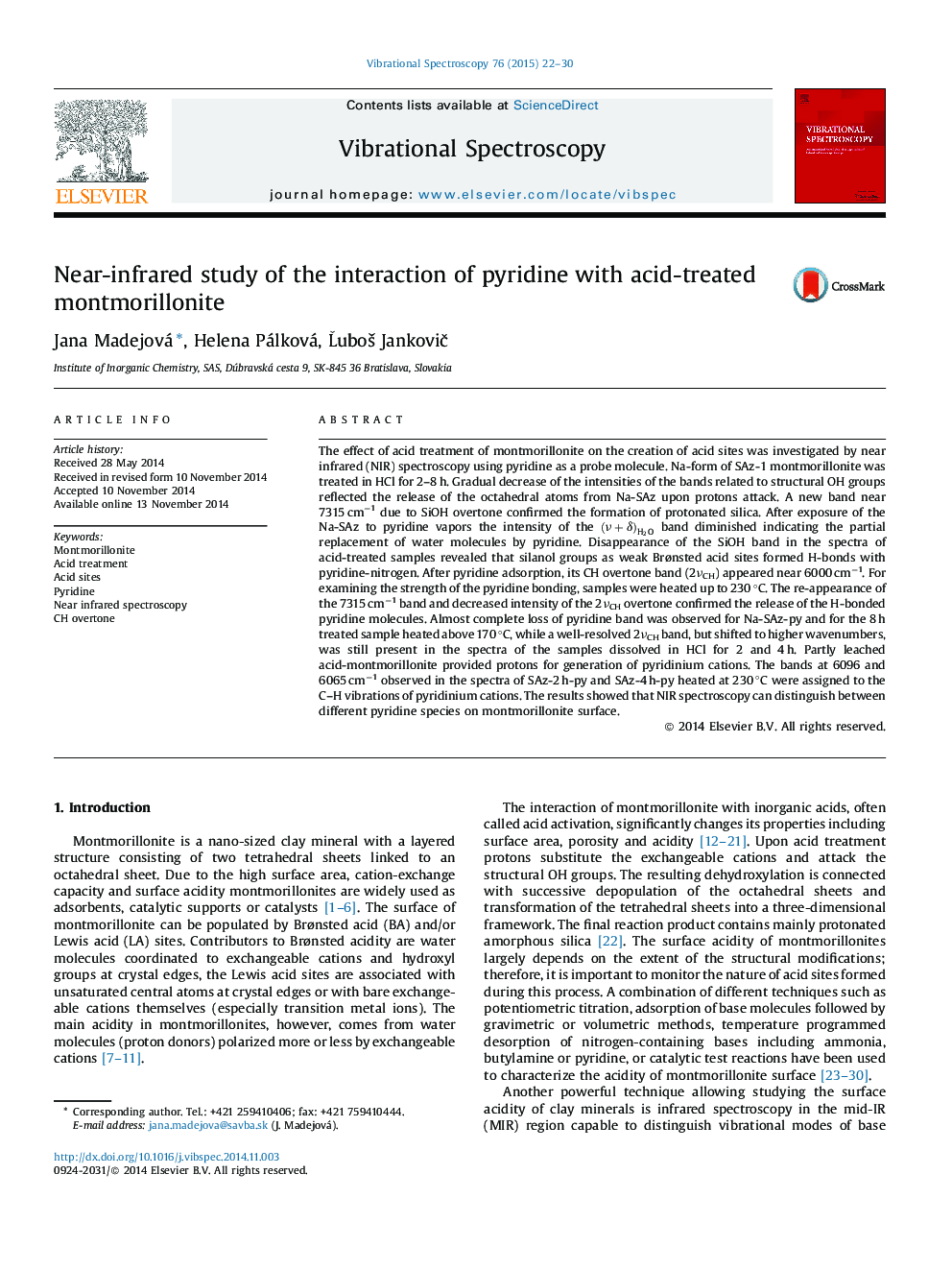| Article ID | Journal | Published Year | Pages | File Type |
|---|---|---|---|---|
| 1250300 | Vibrational Spectroscopy | 2015 | 9 Pages |
The effect of acid treatment of montmorillonite on the creation of acid sites was investigated by near infrared (NIR) spectroscopy using pyridine as a probe molecule. Na-form of SAz-1 montmorillonite was treated in HCl for 2–8 h. Gradual decrease of the intensities of the bands related to structural OH groups reflected the release of the octahedral atoms from Na-SAz upon protons attack. A new band near 7315 cm−1 due to SiOH overtone confirmed the formation of protonated silica. After exposure of the Na-SAz to pyridine vapors the intensity of the (ν+δ)H2O(ν+δ)H2O band diminished indicating the partial replacement of water molecules by pyridine. Disappearance of the SiOH band in the spectra of acid-treated samples revealed that silanol groups as weak Brønsted acid sites formed H-bonds with pyridine-nitrogen. After pyridine adsorption, its CH overtone band (2νCH) appeared near 6000 cm−1. For examining the strength of the pyridine bonding, samples were heated up to 230 °C. The re-appearance of the 7315 cm−1 band and decreased intensity of the 2νCH overtone confirmed the release of the H-bonded pyridine molecules. Almost complete loss of pyridine band was observed for Na-SAz-py and for the 8 h treated sample heated above 170 °C, while a well-resolved 2νCH band, but shifted to higher wavenumbers, was still present in the spectra of the samples dissolved in HCl for 2 and 4 h. Partly leached acid-montmorillonite provided protons for generation of pyridinium cations. The bands at 6096 and 6065 cm−1 observed in the spectra of SAz-2 h-py and SAz-4 h-py heated at 230 °C were assigned to the C–H vibrations of pyridinium cations. The results showed that NIR spectroscopy can distinguish between different pyridine species on montmorillonite surface.
